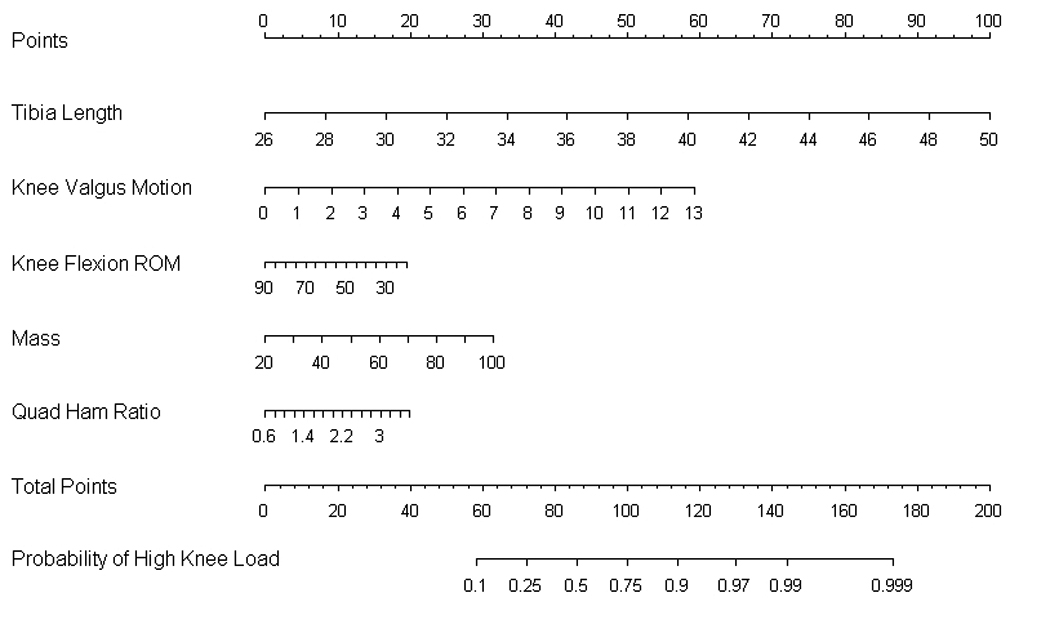Figure 2.

A clinician friendly nomogram that was developed from the regression analysis can be used to predict outcome based on tibia length, knee valgus motion, knee flexion ROM, mass and quadriceps to hamstring ratio. To use the prediction nomogram one should place a straight edge vertically so that it touches the designated variable on the axis for each predictor value, and record the value that each of the five predictors provides on the “points” axis at the top of the diagram. All of the recorded “points” measured using this method are then summed and this value is located on the “total points” line with a straight edge. A vertical line drawn down from the “total points line” to the “probability line” identifies the probability that the athlete will demonstrate high KAM (>21.74 Nm of knee abduction) during the drop vertical jump based on the utilized predictive variables.
